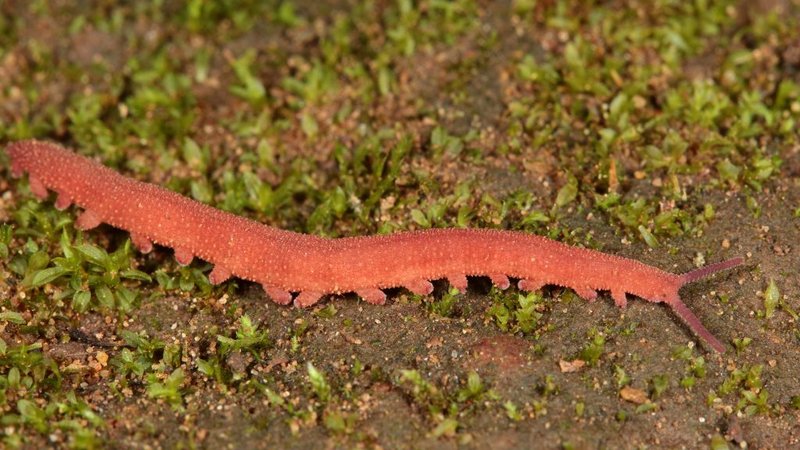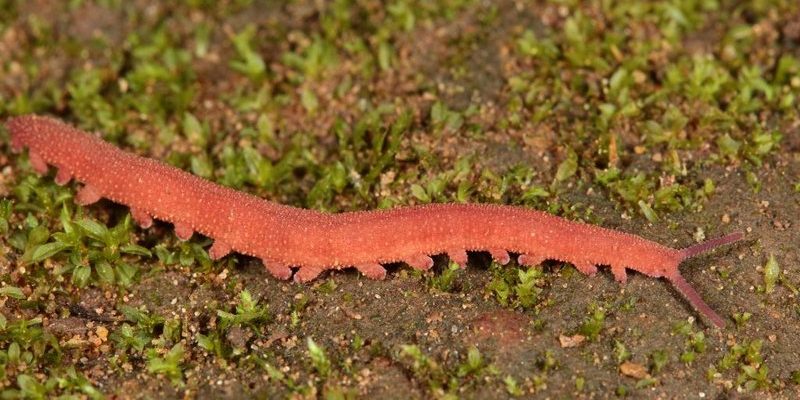
Now, you might be thinking, “What do these little guys have to do with Indigenous wisdom?” Well, let me explain. Velvet worms play a crucial role in traditional ecological knowledge, acting as indicators of environmental health and serving as a foundation for countless stories and teachings passed down through generations. Understanding their role helps us appreciate not just these fascinating creatures, but also the deep connection Indigenous peoples maintain with their natural surroundings.
What Are Velvet Worms?
Velvet worms, or **onnychophorans**, might not be household names, but they’re quite intriguing once you dig a little deeper. These ancient creatures, often found in humid forests, have been around since the time of the dinosaurs. They have a soft, worm-like body covered in a velvety skin, hence the name.
The way they hunt is something out of a sci-fi movie. They produce a sticky slime to trap their prey, usually insects. When you observe them, it’s almost like witnessing a mini predator-prey drama unfold in slow motion. Honestly, the intricate ways they adapt and survive in their ecosystems can teach us a lot about resilience and balance in nature.
Indigenous Knowledge Systems Explained
Indigenous knowledge systems refer to the traditional beliefs, practices, and understandings of the world that Indigenous peoples develop over time. These systems are usually rooted in the ecological and social environments in which these communities live. Imagine a library filled with centuries of wisdom about local plants, animals, weather patterns, and sustainable practices. Each piece of knowledge is interconnected, painting a vivid picture of life that is both complex and deeply rooted.
For many Indigenous communities, knowledge isn’t just about facts; it’s about relationships. They believe that understanding the land, water, and creatures like velvet worms is essential for maintaining harmony within the ecosystem. It’s as if every story told and every lesson learned is part of a larger tapestry, intricately woven with threads of experience, observation, and respect for nature.
How Velvet Worms Fit Into Indigenous Knowledge Systems
Velvet worms are more than just unique creatures; they hold significant meaning in many Indigenous cultures. For example, in certain areas where these worms thrive, their presence indicates a healthy ecosystem. Local communities might observe the number and behavior of velvet worms as a sign of environmental changes, which informs their decisions regarding land use and conservation.
Here’s the thing: when Indigenous peoples notice a decline in velvet worm populations, it often signals a problem. This might indicate issues like habitat destruction, climate change, or changes in biodiversity. By understanding these connections, communities can adapt their practices and advocate for the preservation of both the worms and their environment.
The Stories and Teachings Associated with Velvet Worms
Stories passed down through generations often feature creatures like velvet worms. These stories can serve as moral lessons or explanations of natural phenomena. For instance, a common teaching might illustrate how the velvet worm’s hunting method—using slime—symbolizes patience and strategy.
You might be wondering how these tales impact daily life. In many Indigenous cultures, teaching the younger generations through storytelling is vital. It fosters respect for nature and encourages sustainable practices. When children hear about velvet worms and their role in the ecosystem, they learn not just to admire these creatures, but to understand their importance.
Conservation Efforts and the Role of Indigenous Wisdom
As the world faces environmental challenges, the integration of Indigenous knowledge systems becomes more crucial than ever. Velvet worms, as indicators of ecosystem health, can inform conservation strategies. Collaborating with Indigenous peoples can provide a more holistic approach to conservation efforts.
For instance, by incorporating traditional ecological knowledge with modern science, we can create systems that are more effective in protecting species like the velvet worm. This partnership can lead to innovative solutions that respect both nature and the wisdom that Indigenous communities provide.
Challenges Facing Velvet Worms and Indigenous Cultures
Unfortunately, velvet worms and the Indigenous knowledge surrounding them face several threats. Habitat destruction, mainly due to deforestation and land development, poses a significant risk. As their habitats shrink, so do the traditional practices and knowledge systems linked to these unique creatures.
Additionally, climate change disrupts the ecosystems that velvet worms and many Indigenous communities rely on. You can see the ripple effects: as ecosystems change, the stories, teachings, and wisdom tied to them may fade away. It’s a reminder of how interconnected we all are—humans, animals, and the environment.
The Future of Velvet Worms in Indigenous Knowledge Systems
The future of velvet worms in Indigenous knowledge systems hinges on awareness and action. Communities continue to advocate for the preservation of their traditions and the environments that support them. Preserving these ecosystems ensures that future generations can also learn about and appreciate the role of velvet worms.
You might think, “What can I do to help?” Supporting Indigenous-led conservation initiatives and learning about these fascinating creatures can make a difference. By spreading awareness, you can be part of a movement that values both biodiversity and the wisdom of Indigenous peoples.
In conclusion, understanding the role of velvet worms in Indigenous knowledge systems isn’t just about studying creatures; it’s about embracing a broader understanding of our environment and acknowledging the deep connections that exist in nature. As we learn more about these fascinating worms, we also uncover the richness of the stories and teachings that come from the incredible minds of Indigenous peoples. So, the next time you hear about velvet worms, think about the wealth of knowledge they represent—it’s a world worth exploring.

